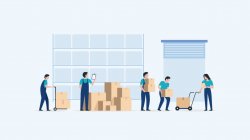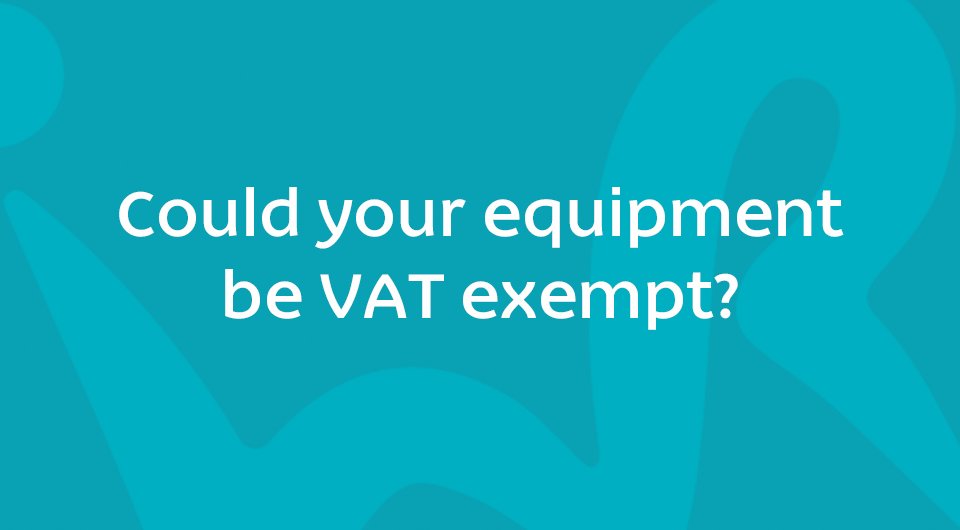That’s especially true for clients equipping their own homes, where they often have to fund their equipment by themselves.
Luckily, the government has measures in place to help reduce the burden on the budgets of disabled people — with a significant tax relief that makes it easier to afford the essential equipment they need.
Here’s what you need to know about VAT exemption for disabled people — and how to find out if your clients are eligible:
| VAT exemption applies to products that are: |
|
How does VAT exemption work?
When you buy goods or services, VAT is added by the supplier to the cost of the product.
In most cases (for products unrelated to a disability), disabled people will pay VAT as normal.
But for goods and services related to a disability, they may be exempt from paying VAT.
That means the supplier of the equipment won’t add VAT to the relevant products — and the total cost will be lower.
Now here’s the important part:
VAT exemption isn’t a refund system.
If your clients are eligible for VAT exemption and they buy something with the VAT included, they won’t be able to claim the tax back from HMRC.
(They may be able to claim a refund from the supplier directly — but HMRC won’t get involved.)
Instead, they’ll need to declare their VAT exemption status before they buy.
| How much could your clients save? |
|
As of 2024, the standard rate for VAT in the UK is 20%. That translates to a discount of almost 17% if the user is exempt from VAT - which could mean saving hundreds or thousands of pounds on the equipment they buy! |
What disability qualifies for VAT exemption?
VAT exemption applies to people who are ‘chronically sick or disabled’.
For the purposes of VAT, that means people who have:
- A physical or mental impairment that affects their everyday activities
- A condition that’s treated as a chronic sickness by the medical profession
- A condition that means they’re terminally ill.
So, as well as people with mobility issues, that also includes impairments like blindness — and long-term illnesses like diabetes or arthritis.
But that doesn’t mean that everyone who needs equipment is exempt from VAT:
People who are temporarily disabled (like someone who breaks a limb) won’t be eligible — nor will people who are elderly but not disabled.
| Don't forget: |
|
Unless you're a charity, VAT exemption only applies to products bought for personal or domestic use. If you're an OT making recommendations for a user at home, they may be exempt. But if you're a care home or hospital buying equipment for your patients, you won't be exempt. |
What goods are covered?
VAT exemption applies to any product that’s been designed or adapted for a disability.
That means your clients could see savings on things like:
- Wheelchairs and mobility scooters
- Specialist beds and chairs
- Stair lifts for wheelchairs and through-floor lifts
- Hoists and slings
- Specialist bathroom equipment — such as shower chairs.
But there are some conditions you need to watch out for:
To be exempt from VAT, the product needs to be ‘solely’ designed or adapted for a disability — not just a product that’s helpful to people with a disability.
Some general products that are designed for everyone won’t be exempt, such as:
- Standard reclining chairs
- Standard adjustable beds
- Standard computers and devices (unless they’re sold as part of an assistive tech package).
So as a general rule:
If it’s a product that’s made for both disabled and non-disabled people — it’s probably not something that’s exempt from VAT.
| Which of our products qualify? |
|
As a specialist supplier of equipment designed for accessible needs, we’ve got a full catalogue of products that were created solely for disabilities. That means our entire product range qualifies for VAT exemption — as well as our installations and servicing packages. |
Does it only apply to products?
VAT is added to the products you buy. But it’s also added to the services and accessories that go with that product.
So, as well as saving money on the equipment they need, your clients can also claim VAT relief on things like:
- The installation of the equipment — like with a ceiling track hoist system
- Building works related to a disability — such as ramps and lifts
- Spare parts and accessories — as long as they’re specially designed for the equipment
- And any repairs or maintenance of the VAT-free equipment.
How can your clients claim VAT relief?
Unlike some other types of tax relief, claiming exemption from VAT is easy:
There’s no special certificate or formal legal process — and they won’t need to show any proof of their disability or illness.
Instead, you or your client can send a simple declaration to the equipment supplier.
This written confirmation usually includes:
- Your client’s name
- Their address
- And the nature of their disability or chronic sickness.
You won’t need any reference numbers or notes from a doctor — just a few quick details to confirm who they are and what their condition is.
Some suppliers will have their own disabled VAT exemption form for their customers to fill out (like our one below). But if they don’t, you can use the suggested template form from the government’s website.
| What do your clients need to provide? |
|
To comply with GDPR, VAT exemption forms shouldn't be sent via email. Click on the link to complete a secure online form. |
Need some advice about tax-free products?
If you’re an OT working with a disabled client at home, choosing the right equipment could help them save thousands of pounds in VAT relief.
So if you’re shopping around to make a recommendation — but you’re not sure if a product qualifies for exemption?
Start a chat with one of our experts — and we’ll help you find the best equipment for their budget.
Book a free product assessment

Latest Blog Posts
Seasonal opening times 2025/26
2025 Holiday Season Update - Our team are here for you but we will be taking a break between the 24th December and 2nd January 2025.

New Shower Chair Innovation
Experience Wealden Rehab’s new shower chair innovation at the OT Show 2025

Responsive Care Equipment Supplier Across the UK
Supporting hospitals and care providers in unsettling times ...

NAEP Conference 2025
Meeting Occupational Therapists, Commissioners and Exploring Bariatric and Paediatric Solutions

Our Seasonal opening times 2024/25
Our team are here for you but we will be taking a break between the 24th December and 2nd January 2025.

Can a RAZ shower chair rust?
Get an in-depth look at the RAZ shower chair range and the protective features that make them built to last





